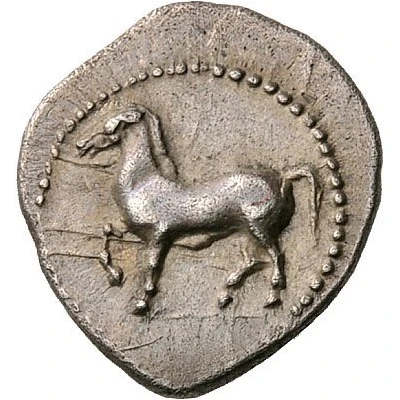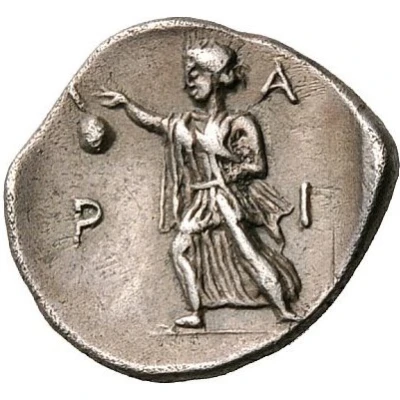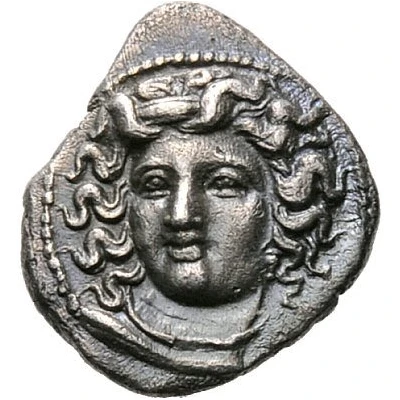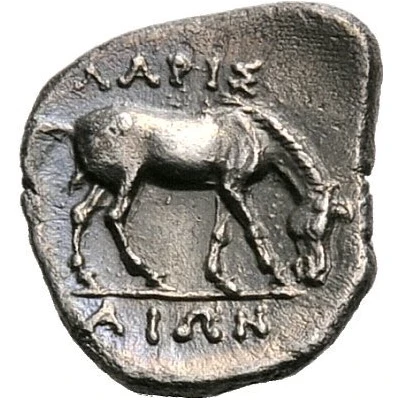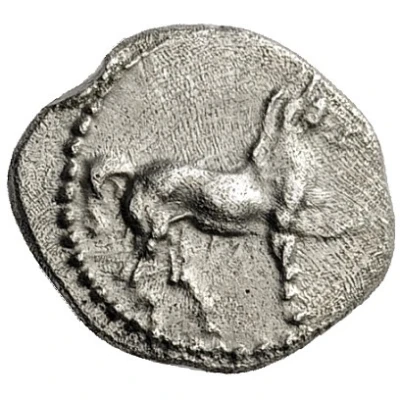
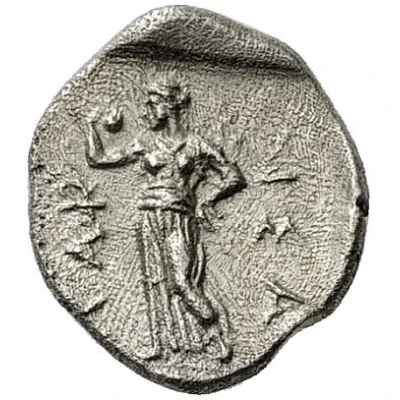

© Nomos AG
Obol 420 BC - 400 BC
| Silver | 0.96 g | 12.0 mm |
| Issuer | Larissa (Thessaly) |
|---|---|
| Type | Standard circulation coin |
| Years | 420 BC - 400 BC |
| Value | Obol (⅙) |
| Currency | Drachm |
| Composition | Silver |
| Weight | 0.96 g |
| Diameter | 12.0 mm |
| Shape | Round (irregular) |
| Technique | Hammered |
| Demonetized | Yes |
| Updated | 2024-10-10 |
| Numista | N#185310 |
|---|---|
| Rarity index | 100% |
Reverse
The nymph Larissa standing facing, her head turned to left, holding ball in her right hand and resting her left on her waist
Script: Greek
Lettering: ΛΑΡ ΙΣΑ
Interesting fact
The Obol coin was used as a form of currency in ancient Greece, specifically in the city-state of Larissa (Thessaly) during the 5th century BC. It was made of silver and weighed approximately 0.96 grams. Despite its small size, the Obol coin played a significant role in the ancient Greek economy, as it was widely used for buying and selling goods and services. In fact, the Obol coin was so widely used that it became a standard unit of currency in ancient Greece, and its value was equivalent to 1/6 of a drachma, which was the standard unit of currency in ancient Athens.
